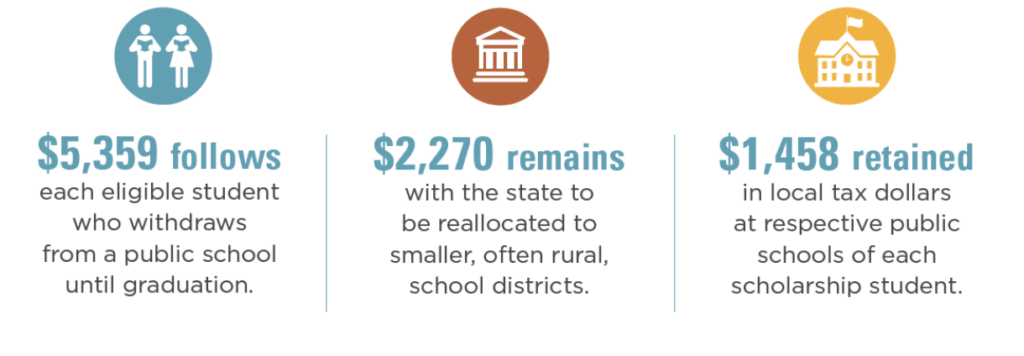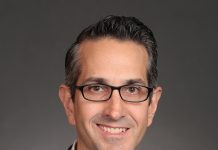Right now, as you might have heard the legislative session is at a stand-off, this is due to a disagreement with the house on the Governor’s School Choice bill, and some disagreement on spending. I have been very vocal over the years on allowing parents to choose the best educational opportunity and wanted to communicate what is exactly in this bill.
- There are currently 8 states that have ESAs set up. These states are Arizona, Mississippi, Florida, Tennessee, Indiana, New Hampshire, North Carolina and West Virginia. Arizona was first to implement ESAs in 2011. In a 2013 study done by the Friedman Foundation, they found that no parent responded as neutral or dissatisfied with their education savings accounts. All participating parents were satisfied or highly satisfied with their experience.
- Iowa’s private colleges are able to accept state and federal scholarship and grant funding. It is time for us to allow parents to directly fund the program that is best for their child from an early age.
- ESAs will also help with college savings because leftover funds can be rolled into paying for higher education costs
- For our caucus only: This means a family of means who has saved to send their children to private school can apply for an ESA when their child enters kindergarten. If they take on the cost of paying for private school from when their child is in kindergarten until they graduate high school but have been receiving ESA money, their child can use that money for higher education. This could result in the state paying almost the full cost of their higher education.
- When students leave a public school using ESAs, the public school is relieved of the duty/costs of educating those students. Declining enrollment typically leads to a revenue loss for public schools, but this is true whether the departing students switch to a private school or another public school. The state pays for the cost of a student if they open enroll to another public school. ESAs simply expand the options for students who are unhappy at their current public school.
- ESAs are an innovative way to help parents who feel stuck at underperforming schools while still allowing the state to be an impartial provider for Iowa students.
- One of the main concerns relating to education savings accounts is the differences in standards set by the state relating to private versus public institutions.
- However, requiring the exact standards implements the same regime a parent is trying to escape when moving their child to a public school. This results in no real school choice and educational options for the children in our state.
- The competition that arises from school choice drives both public and private schools to do better. In our own state, we have seen the results of the competition. ESAs do not hurt public schools. There have been 31 evaluations of private school choice programs’ impact on public schools. Twenty-nine of these studies found that offering school choice improved the performance of nearby public schools. The other studies found no observable impact, and no study has ever found that offering private choice academically hurts students who remain in public schools.
- Implementing ESAs will also protect funding for public schools. Currently, private school parents do not worry about setting SSA and how public schools are funded because they do not have to. However, implementing ESAs will link public and private schools and cause all parents to have a vested interest in funding public education.
- ESAs will enhance student achievement outcomes. Of the 18 most rigorous studies on academic outcomes, 14 show positive results for school choice participants. For example, students benefitting from the Milwaukee Parental Choice Program (a voucher system) scored 10.7 percentage points higher in math and 5.8 percentage points higher in reading than their peers in public school.
- Ultimately, this argument comes down to if we think we know more about what is best of children in Iowa or if we believe the child’s parent does. Parents should have the right to make choices for what is best for their child’s education and have the resources do so. Furthermore, parental engagement in their student’s education is shown to increase student achievement.
- When a student withdraws from their public school to attend the school of their choice using a Students First Scholarship, their public school will actually keep the portion of per-pupil funding generated by local and federal taxes — even though that student is no longer being educated there. However, when a student’s family moves out of the district, the school loses the entire amount of funding for that student. Students move into and out of school districts regularly and budgets are adjusted accordingly.
- School district boundaries have kept low-income families in low-performing schools for too long. Students First Scholarships offer low and middle-income students in any school district a different path if they want it. And for students who choose to stay in their public school, research shows that school choice can motivate lower-performing schools to make improvements that boost performance and help retain the students and families they serve. It will also help rural districts through the Student First Enrollment Supplement Fund while keeping local tax dollars in the resident district of the student.

- Students First Scholarships empower families to choose the best education for their children.
- Eligible students who withdraw from public school will receive a portion of their “per pupil” funds to help cover qualifying expenses like private school tuition or other education services and materials.
- Per-pupil funding is the state’s investment in each individual student. Funds are allocated annually to cover the educational costs of each student enrolled in a public school district.
- Funds will be deposited into an educational savings account (ESA) each year until a student graduates from high school. The remaining funds can be used until a student is 23. The account balance then reverts to the state general fund.
Finally, why do only rich people get the option to where to send their children to school? Although my wish was that school choice was available to all parents, this legislation is for 5,000 students with a Special Education (IEPs) designation, and 5,000 students of low-income families.
With the COVID shutdowns, obscene materials in classrooms, shared bathrooms, and violation of state law on Critical Race Theory, now is the time to empower parents!


















[…] Republican State Senator Brad Zaun acknowledged in his latest newsletter that state funds could pay “almost the full cost” of college for well-off families that […]
[…] pay private school tuition, the additional funds may even pay for college, as one Iowa Republican acknowledged last […]
[…] pay private school tuition, the additional funds may even pay for college, as one Iowa Republican acknowledged last […]